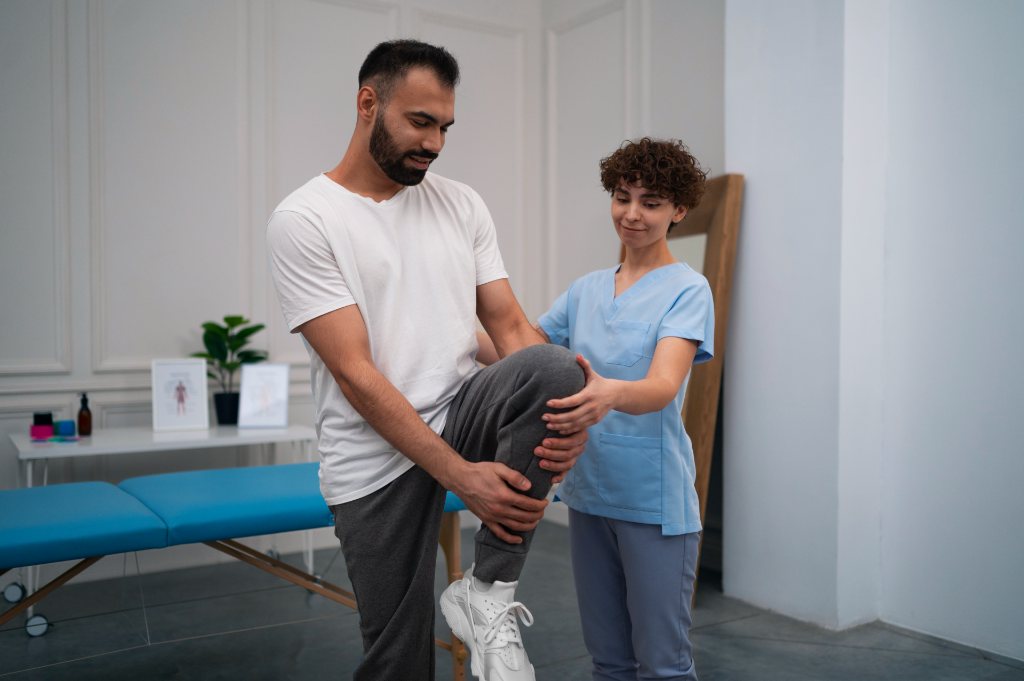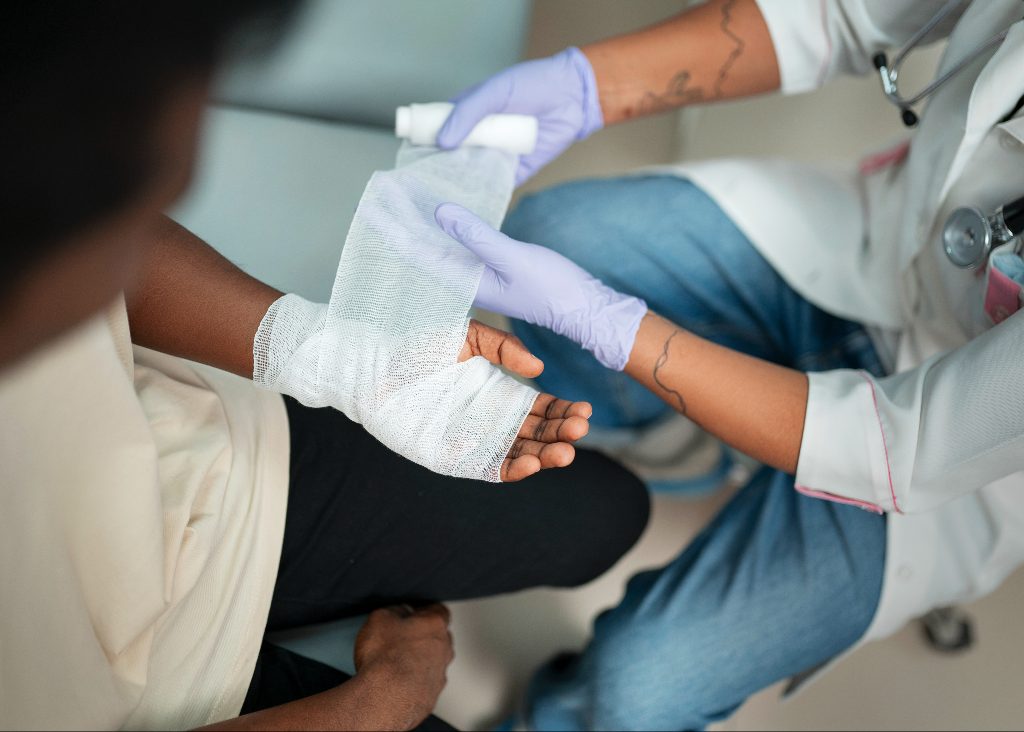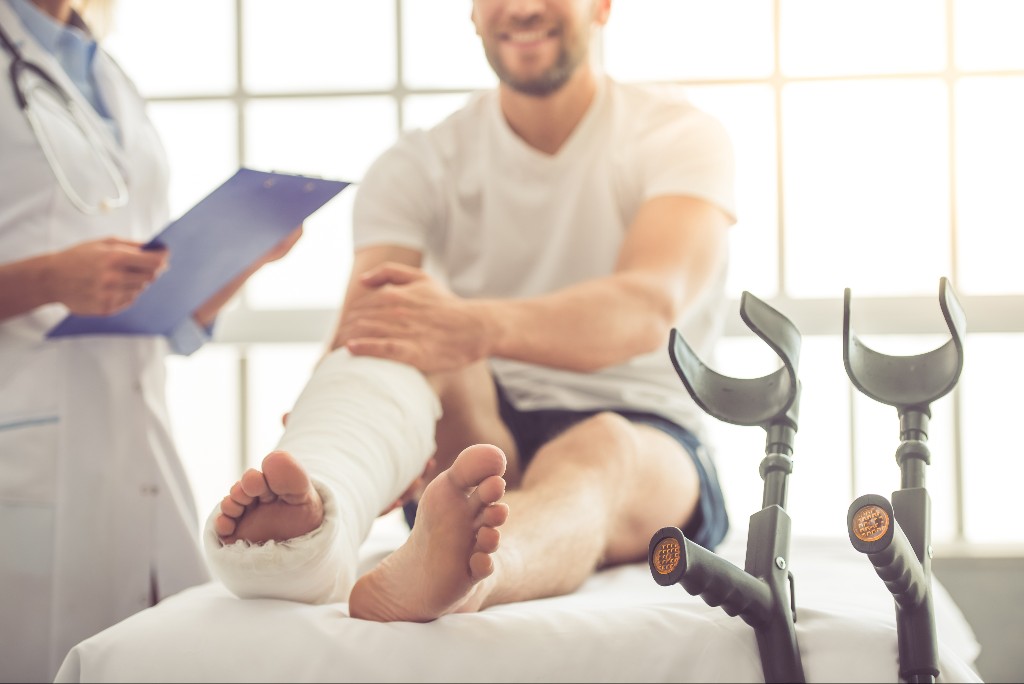Your elbow joints work to absorb the impact of movements you make throughout your day, which means an injury to one of your elbows can negatively affect your everyday routines. The elbow is a hinge joint that connects the three bones in your arm: the humerus, radius, and ulna. The three arm bones allow you to flex, extend, and rotate your elbow. The elbow is also comprised of tendons, ligaments, and muscles that help the joint function properly.
Your specific type of elbow injury will depend on what structures inside the elbow are impacted. In order to get the correct broken elbow treatment, you will first need to find out what type of elbow injury you have. Two common elbow injuries that affect the tendons, muscles, and bones of the elbow are known as tennis elbow and golfers elbow. Here’s what you need to know about both conditions and how to determine if you are dealing with tennis elbow vs. golfers elbow.
Two Types of Epicondylitis
The arm bone known as the humerus has a round knob at the end of the bone at the elbow, known as an epicondyle. The tendons that surround this rounded protuberance can become inflamed, which can cause uncomfortable symptoms and even lead to an elbow injury that requires medical attention. Inflammation of these tendons is known as epicondylitis, and the location of the inflamed tendons helps distinguish whether you are experiencing tennis elbow or golfers elbow.
Lateral Epicondylitis
Lateral epicondylitis refers to inflammation that occurs in tendons along the outside of the elbow and forearm. Tennis elbow is the more common term for lateral epicondylitis, which gets its name because of the common forehand and backhand swings of the tennis racket that can cause this type of sports injury.
Medial Epicondylitis
Medial epicondylitis refers to inflammation that occurs in tendons along the inside of the elbow and forearm. The more common term for medial epicondylitis is golfers elbow, in reference to how common golf strokes can impact the elbow joint.
What Is Tennis Elbow?
You might be surprised to hear you have an elbow injury called tennis elbow if you don’t actually play tennis! While tennis elbow is the common term for lateral epicondylitis, it can affect everyone, not just athletes and tennis players. Tennis elbow refers to pain and injury to the outside of the elbow due to inflammation that can occur for a number of reasons. Repetitive movements and overuse can cause the tendons in your forearm and elbow to become inflamed.
Tennis Elbow Symptoms
The most common symptom of tennis elbow involves pain along the outside of the elbow. This type of pain tends to get worse during or after repetitive motions that involve your wrist, elbow, and arm. In addition to pain around the bony knob along the outside of your elbow, you may also experience pain that radiates from the elbow and into your forearm and wrist. Another symptom of tennis elbow includes weakness, and you might find it difficult to maintain a firm grip, like while holding a glass or turning a doorknob. The pain associated with tennis elbow can come and go with certain movements, or you might experience it as a constant ache.
Causes and Risk Factors for Tennis Elbow
Tennis elbow is primarily caused by overuse and repetitive movements that utilize the elbow, forearm, and wrist. Repeated movements like straightening and raising your hand and wrist can put stress and strain on the soft tissues like tendons and muscles that support your elbow joint. Tiny tears can develop along these soft tissues, along with swelling and inflammation from how the movements aggravate the tissues. Tennis is an obvious culprit for developing tennis elbow, along with activities and occupations that require repetitive arm and elbow movements like plumbing, painting, carpentry, cooking, and typing. While tennis elbow can affect people of all ages, you are more likely to develop tennis elbow if you regularly participate in racket sports.
Diagnosing Tennis Elbow
In order to diagnose tennis elbow, your doctor will locate the source of your pain and discomfort. Explain the symptoms you have been experiencing with your doctor, including whether certain movements or motions have made the pain worse. Your doctor will also want to perform a physical examination of your arm, elbow, and wrist to see how your bones and soft tissues have been affected. Your doctor will review your medical history and perform a physical examination to begin making a diagnosis of tennis elbow. They may also want to run diagnostic imaging tests like a set of X-rays or CT scans to get a clearer look at the elbow joint. These diagnostic tools can also help rule out other potential causes for elbow pain and inform the elbow treatment appropriate for you.
What Is Golfers Elbow?
Similar to tennis elbow, golfers elbow doesn’t just affect amateur and professional golfers. In fact, tennis players can also develop golfers elbow! You can develop golfers elbow following repetitive movements and overuse of the elbow joint participating in a wide variety of activities and job duties. Unlike tennis elbow, golfers elbow affects the soft tissues that stretch along the inside of the elbow. Tendons, muscles, and other soft tissues that interact with the bony bump at the inside of the elbow can become inflamed with repetitive motions that cause stress and strain.
Golfers Elbow Symptoms
One of the most common symptoms of golfers elbow is pain and tenderness around the inside of the elbow joint. This pain can also extend along the forearm and may get worse with certain movements, especially when moving the wrist in certain ways. Golfers elbow can also cause stiffness that you feel in your elbow when you try to make a fist. Weakness in your hands and wrists is also common with golfers elbow. Numbness or tingling may also occur, especially in the ring and pinky fingers. The nerve that sends signals through the forearm, wrist, and to the ring and pinky fingers runs through the elbow and can also be aggravated by a golfers elbow injury.
Causes and Risk Factors for Golfers Elbow
When the muscles and tendons that help with wrist and finger movements are overworked and stressed, it can actually impact the soft tissues along the inner elbow. Golfers elbow gets its name due to the way golfers hold the club and swing, which can be forceful on the wrist and forearms. Improper techniques for weightlifting, throwing, and hitting can also cause golfers elbow. Little or no warmup before physical activity that involves the hands, wrists, and arms can also cause golfers elbow. In addition to these activities like racket sports, throwing sports, and weight training, activities and motions required in the workplace like construction, plumbing, and carpentry can also cause golfers elbow. You may be at a higher risk for developing golfers elbow if you are over the age of 40, obese, a smoker, and perform repetitive hand and wrist movements for multiple hours a day.
Diagnosing Golfers Elbow
In order to diagnose golfers elbow, your doctor will take a thorough medical history and want to hear more about the symptoms you have been experiencing. Tell your doctor if your pain and other symptoms get worse with certain movements. Your doctor will perform a physical examination of the affected area and may also ask you to perform certain movements and motions to get a better idea of what parts of your arm, elbow, and wrist are impacted. In some cases, your doctor may also request an X-ray or CT scan to get a better look at how the elbow joint has been impacted or damaged by these repetitive movements. These scans can also help to rule out other potential injuries or issues in the elbow.
Recognizing Tennis Elbow vs. Golfers Elbow
Your doctor will be able to recognize the difference between tennis elbow and golfers elbow based on where your pain and discomfort is located. If your pain starts along the inside of your elbow, then you are likely dealing with golfers elbow. However, if your pain is primarily affecting the outside of your elbow, then tennis elbow is the more likely culprit. When you are dealing with elbow pain that extends into the arm, wrist, and hand, you might find it difficult to determine the origin of the pain. Your doctor can help locate the root cause of your pain and other symptoms and recognize whether you are dealing with tennis elbow or golfers elbow.
Golfers Elbow vs. Tennis Elbow Treatment Options
Regardless of whether you are dealing with tennis elbow or golfers elbow, your immediate treatment efforts will be the same: resting the elbow joint. Any type of overuse injury caused by repetitive movements requires you to take a break from those activities so that the swelling and inflammation can go down. When you rest and avoid certain movements that negatively impact the elbow, you also give the soft tissues in your joint a chance to avoid becoming aggravated while they heal. You may need to rest your affected elbow for days or weeks depending on the severity of your golfers elbow vs. tennis elbow symptoms and diagnosis. Icing the elbow can also help to reduce swelling and inflammation in the area, while also providing you with a temporary numbing sensation that can ease your pain. You may also consider taking pain relievers with anti-inflammatory properties like ibuprofen or aspirin.
When rest, ice, and at-home attempts to relieve your pain do not offer lasting results, your doctor may recommend other treatment options. Your doctor may suggest you wear a brace on your elbow, forearm, or wrist to help redirect pressure and provide support to the area. Physical therapy can also help you safely and effectively recover from tennis elbow or golfers elbow. A physical therapist can walk you through certain stretches and exercises to help strengthen the muscles, tendons, and soft tissues in your arms and wrists. Physical therapy can also help you improve your technique for a certain sport or when performing certain job-related tasks. In rare cases, you may need other procedures or surgical intervention to help with your elbow injury. Dry needling, ultrasound, and cortisone injections may be recommended to help with the pain. Your doctor may talk to you about surgical options if your symptoms do not improve after six months to a year.
Tips for Preventing Tennis Elbow & Golfers Elbow
Here are 3 tips for how to prevent tennis elbow and golfers elbow in the future:
Practice Proper Technique
One of the best ways to avoid injury when participating in sports and physical activities is to practice the proper technique. Amateurs and professionals alike can develop poor techniques that end up causing stress and strain on the joints. If you play racket sports, for example, work with a trainer or physical therapist to ensure you are utilizing the proper form when completing repetitive movements like a backhand stroke.
Focus on Strengthening and Conditioning
You need healthy, strong muscles to help avoid injuring yourself whether you are playing sports or performing work tasks. Whether you are a tennis pro, amateur golfer, or enjoy throwing the ball around with friends on the weekends, you want to make sure your body is strong and conditioned for these repetitive movements. Strong muscles and tendons help support joints like the elbow that you use every day. These soft tissues also provide stability and support so you can avoid developing pain or injuring yourself.
Talk to Your Doctor When You Experience Pain
Playing through the pain often ends up causing more harm and leads to a worse, more painful injury. Be proactive about the activities you enjoy participating in and talk to your doctor if you start to experience pain that affects your everyday movements. When you have a mild elbow injury, at-home remedies and mild intervention may be all you need to recover. But if you wait too long to see a doctor, you risk developing chronic pain or needing more invasive treatments. Start treating your sports injuries with comprehensive care.
At AICA Orthopedics, our team of orthopedic doctors, physical therapists, chiropractors, and more can help you through any type of elbow injury. Whether you are dealing with tennis elbow pain or are in need of golfers elbow treatment, our teams of multispecialty doctors are here to help.
Sources
Buchanan BK, Varacallo M. Tennis Elbow. 2021 Jul 25. In: StatPearls [Internet]. Treasure Island (FL): StatPearls Publishing; 2021 Jan–. PMID: 28613744. https://pubmed.ncbi.nlm.nih.gov/28613744/
Kiel J, Kaiser K. Golfers Elbow. 2021 Jul 25. In: StatPearls [Internet]. Treasure Island (FL): StatPearls Publishing; 2021 Jan–. PMID: 30085542. https://pubmed.ncbi.nlm.nih.gov/30085542/
Amin NH, Kumar NS, Schickendantz MS. Medial epicondylitis: evaluation and management. J Am Acad Orthop Surg. 2015 Jun;23(6):348-55. doi: 10.5435/JAAOS-D-14-00145. PMID: 26001427. https://pubmed.ncbi.nlm.nih.gov/26001427/





